In attachment, you will find the picture of the day.
Ignore First Operation report for March 29th
I will be sending a second corrected version.
Sol Summary March 29th
category sol-summary]
Crew 227 Sol Summary Report 29-03-22
Sol: 2
Summary Title: Experiments are picking up.
Author’s name: Jean Jacobs (XO)
Mission Status: Crew members gather data for their experiments.
Sol activity summary:
09:00 Breakfast (experiment Sirga)
10:00 Julie’s experiment training + Cheyenne soil mixing
13:00 Lunch
14:00 First two contests in Julie’s experiment
14:00 Crew members work on their respective experiments in the science dome, HAB and GreenHab
18:00 Report redaction and correction
19:00 Capcom
Anomalies in work: None
Weather: Cloudy with mild showers
Crew Physical Status: Crew is in shape
EVA: No EVA today
Reports to be filed:
– Crew commander
– Journalist
– GreenHab officer
– Engineer
– EVA report
– HSO
– Astronomer
– EVA request
– Some pictures
– Picture of the day
– Mission plan
Support Requested: None at this time
Mission Support Crew 264 Photos
Hi Ben,
These photos are in the incorrect format (HEIC instead of JPG). Please resend.
Thanks,
James
—
|
||||||||||||
|
|
||||||||||||
|
||||||||||||
|
On Fri, Mar 25, 2022 at 8:21 AM Shannon Rupert <srupert> wrote:
Mission Support Crew 264 Photos
Mission Support Crew 264 Sol 1 Photos
Crew 264 Sol 1 photos
Final Mission Summary – Crew 263
Crew 263 – From February 20th 2022 to March 12th 2022
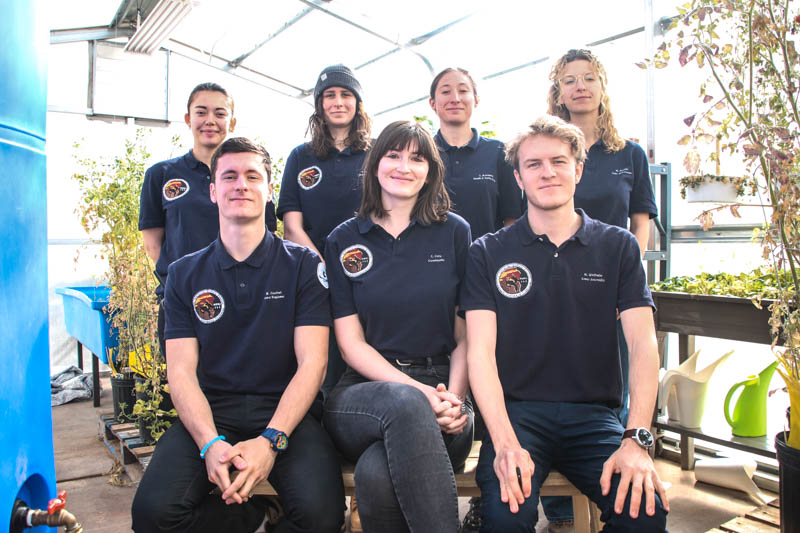
After a year of planning, we were very excited to finally be on Mars. We are members of the Mars Association of our University ISAE-Supaero in France, just like Crew 240 which rotation was right before ours. We went on with some of their scientific experiments as the researchers were interested in having data over 6 weeks or from two separate crews.
Concerning the atmospheric experiment delivered by the French Center of National Scientific Research (CNRS), a part of a device was lost by Crew 240 before their rotation. We successfully handcrafted parts of the device in order to make it work and were able to take it outside by the end of the first week, securing 2 weeks of data. We had a humidity issue on Purple Air during the second week, constraining us to remove it. The LOAC (Light Optical Aerosol Counter) had to be taken in when snow was forecasted, which is the nominal use. All other devices worked nominally.
In addition to scientific experiments consecutively performed by Crew 240 and us, we wanted to have our own experiments, which explains our busy mission planning. Three ultrasound medical surveillance sessions were performed. An Augmented Reality App developed by the French Space Agency (CNES) along with an ultrasound device from Sonoscanner were used to assess an autonomous organ capture by astronauts. All crew members showcased an improvement on their ultrasound performance.
For the ham radio experiment, we had two objectives. Troubles with the statistic study happened because of wind which broke and disoriented our antenna. We fixed it three times during EVAs. However, we managed to listen to a few beacons. For the contact with the other “Martian base”, it did not work as we thought it would. The plan was to contact Toulouse using three modes: Data, CW and SSB. The Data mode was the most promising one but unfortunately, we never received any signal. We managed to decrypt Toulouse’s indicative “F5KSE” in Morse code (CW). We do not know yet whether Toulouse has heard us or not. For the SSB mode, we knew it would be more difficult to have any signal at all and the luck wasn’t on our side this time.
About our gravitropism experiment, we wanted to make plants grow on a rotating platform and make daily measures. It was planned in two parts, the first one with a horizontal rotation (the historical “Knight’s wheel experiment”), the second one with a vertical rotation. But, we did not succeed in making our seed grow. We tried several times different ways. We do not know exactly why it did not work.
The safety protocols experiment had one main educative goal. The three protocols were written along with children from priority education areas to introduce them to space exploration. Two of them were held during EVAs and one in the Hab. The Hab security protocol tested reactions during a small depressurisation. It highlighted how disorganised we were and how difficult it was to communicate efficiently.
As for the deep sky astrophotography, two galaxies (M51 and M81) and nebulas (Horsehead and Rosette) have been successfully imaged during the crew 263 rotation. The pictures are currently post-processed by the astronomer to obtain final images. Several attempts to capture other objects have been made during the 3-weeks of the mission but the weather conditions (wind, clouds) and other unknown issues lead to blurry or mis-pointed photos and prevented the obtention of exploitable pictures. Concerning the exoplanet transit detection, one exoplanet transit (TOI 959.01) has been imaged during the mission, the light curve has been traced but no transit can be identified from the comparison of the exoplanet light curve and its comparison stars.
If the beginning of the simulation was complicated and frustrating because the weather prevented us from doing the EVAs as planned, it got much better during the second week. Two geological field studies were performed. The first one consisted on identifying and documenting the transition between 2 geological eras -Cretaceous and Jurassic. This study allowed to asses martian field campaigns by human operators using a handheld LIBS (laser-induced breakdown spectroscopy) analyzer, the SciAps Z-903. The second study was the analysis of sulphate deposits in the Summerville formation. Robotic missions on Mars have identified sulphate deposits and hence studying them on Earth to allow comparison was of importance. These studies were successfully performed while following an EVA protocol and wearing spacesuits, gloves and a helmet.
Moreover, a search and rescue experiment were implemented to study the use of drones for saving astronauts on Mars. Three EVAs were necessary for this survey: two with a drone using different speed, and one without any drone. We noticed that even with gloves and helmets, the situations using the drone were quicker, less dangerous and less stressful. Even if the drone’s thermal camera was not as efficient as predicted, the visible camera helped the rescuing team to find the better way to reach the other team.
We also took advantage of EVAs to test the emergency protocols. It helped us take the best actions to be found quickly with or without a drone to find us. We also wrote an exhaustive feedback for the children.
During the course of the mission, Crew 263 had the chance to test an AR application developed for astronauts’ geological fieldwork. The application required a HoloLens to be used during EVAs. It was difficult to use the HoloLens while wearing a suit, but the crew overcame the issue quickly and provided useful feedback to improve both the hardware and the software. In all, it was a successful first testing of the AR application.
A neuroergonomic approach to cis-lunar operation was also tested by the astronauts. The objective of this experiment was to test the effect of different body positions on performance when teleoperating a rover. Each astronaut performed the task 3 times every week: once sitting, once standing up and once on their side. After each task, they had to report their tiredness and how they had perceived their performance. This experiment was nominal along the course of the mission.
The first week of simulation was a bit complicated and the crew was confused a lot. Shannon came back to the Outpost on Wednesday and questioned a lot of our ways. It was stressful for us as we felt like we were doing everything we could according to the Handbook, the Report templates and examples from the two weeks prior to our rotation on the mission support mailing list. Nevertheless, we are very grateful for her advices as they were very relevant: we learned a lot from them. We learned how to redact precise EVA Requests that were also compliant with the Mars simulation. Shannon also highlighted that we may have planned to perform too much experiments and that future Martian missions would probably be more centered on daily life activities.
As we think that like on the ISS, water will be a rare resource on Mars crewed missions, we were very careful with our water consumption. We collectively decided that only two showers would be allowed for each crew member, using alternative methods for daily hygiene. Nevertheless, two crew members decided not to take any shower and the other five took only one. Moreover, the water consumption was carefully monitored by category of use, in order to see if it was possible to save more water. Techniques were put in place to save water while doing the dishes, cooking or brushing our teeth. Monitoring of sleep status throughout the mission was performed using Dreem headbands. This allowed to take initiatives such as relaxation sessions according to the crew members sleep state.
As for the general engineer operations, the Crew Engineer had work to do with some batteries and fuses that stopped operating in the suits. Of course, he had to do his daily work like pumping water from static tank to loft tank, maintaining the station, the rovers and emptying the toilets. Moreover, we were happy to have a better situation than Crew 240 regarding the toilet’s situation: it was almost not smelling at all and could be emptied every four days.
Given that the GreenHab was only operative for the first 4 days of the mission, we were left with no fresh food, and Elena was left with no plants to take care of. However, the GreenHab emergency was the team’s first Martian emergency and they reacted in a successful way: everyone pitched in and helped emptying the GreenHab as fast and precisely as possible.
Last but not least, the crew has learned to live as a Space Team. Proximity, lyophilized food and EVAs were our routine. We all enjoyed our journey on Mars!
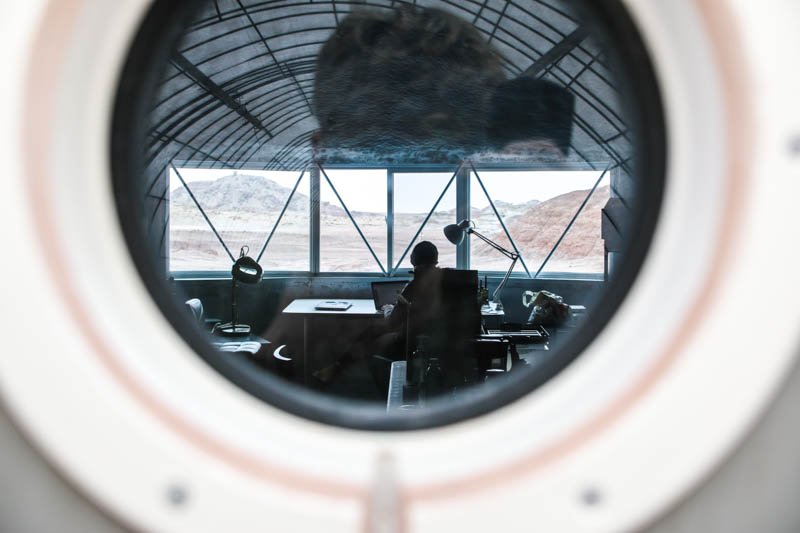
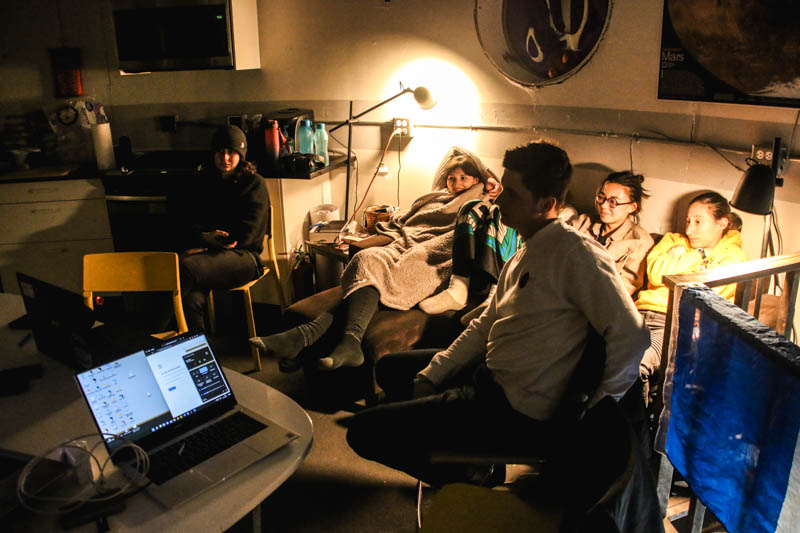

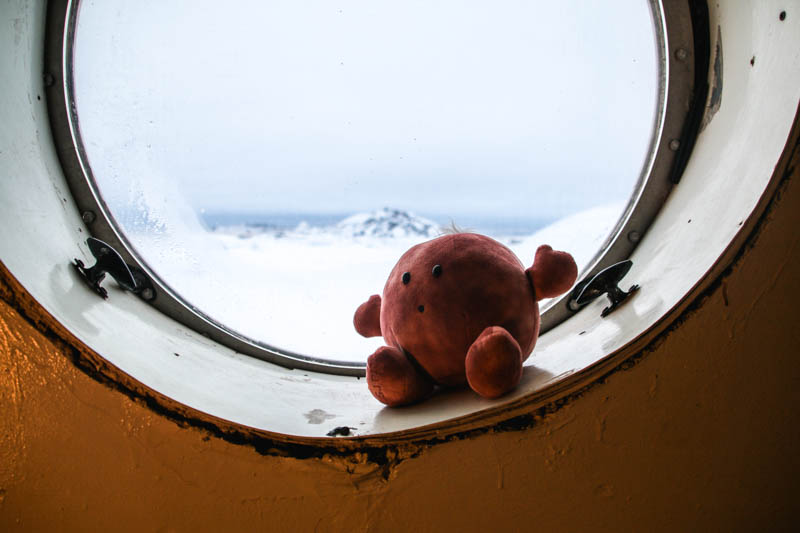
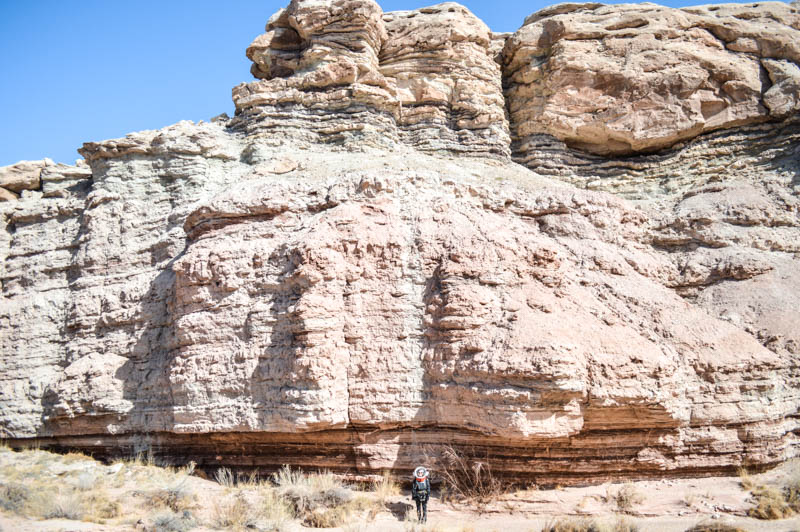
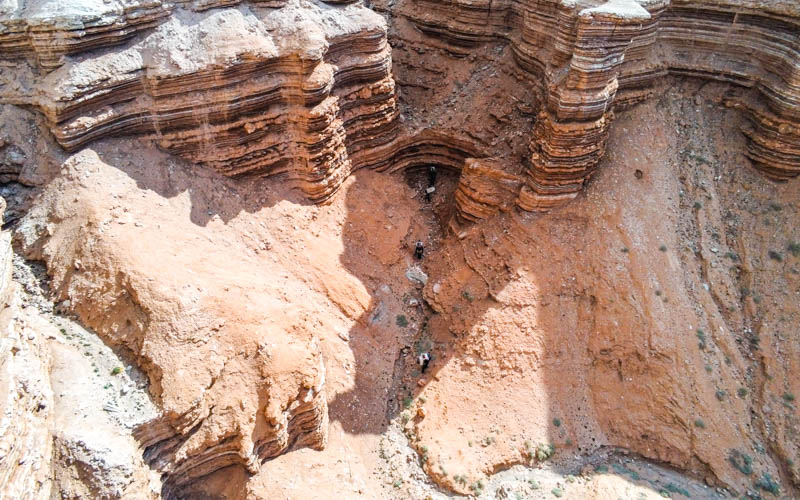
Mission Support Crew 263 Daily Pictures 08/03/2022
Crew 263 Sol Summary 03Mar2022
[title Sol Summary – March 3th]
[category sol-summary]
Crew 263 Sol Summary 03-03-2022
Sol: 10
Summary Title: Depressurisation in the Hab
Author’s name: Cerise Cuny
Mission Status: Nominal
Sol Activity Summary: This morning Léa leaded the second EVA for the LIBS experiment. This time, the team had a lot more time than two days ago and was able to reach its goals in the area of Stream bed connector. They were very aware of the constraint of the Martian conditions, carrying the EVA suits was very tiresome and painful for the shoulders. Without the suits, there is no doubt they would have been able to do more, and that is exactly why it is interesting to try out the LIBS in those SIM conditions.
For lunch, the only non-French crew member Elena did an absolutely delicious tortilla, bringing Spain on Mars. She cooked for an hour and it was absolutely worth it. She had help from Nicolas and Mathéo to flip the very heavy frying pan: it is a three people’s job.
In the afternoon, in addition to undertaking Human Factors experiments, preparing EVA Requests, writing various reports, some of us went through old pictures: a nostalgic moment, missing our families. In the end of the day, we simulated a depressurisation in the Hab and followed an emergency protocol written by children of underprivileged backgrounds of Toulouse, France. Upon our return to France, we will give them feedback, underlining which parts where relevant and explaining why some others were not. By engaging with these children we hope to inspire the next generation of Space engineers and show them the educational path to reach their dreams.
Look Ahead Plan: Tomorrow, if the weather and the roads condition allow it, the EVA team will try to reach Candor Chasma to study another area of interest for its primary sulfate deposits. Valentine and Nicolas will try reaching Toulouse with the HF antenna in the morning. We hope this time if will be successful.
Anomalies in work: None.
Weather: A few clouds, no wind.
Crew Physical Status: Good.
EVA: EVA 14, nominal.
Reports to be filed: Sol Summary, EVA Request (n°15), EVA Report (n°14), Operations Report, Journalist Report, HSO Report.
Support Requested: We would be very grateful for clean kitchen cloths. Unfortunately we didn’t think to bring any laundry detergent ; if some is provided, we can hand wash them. We found two kitchen cloths tied up in a cupboard, we don’t know if they are clean or not. Astronomy Wifi: our astronomer is wondering if last evening’s requested support on the Astronomer Wifi went through or not.
Crew 263 Journalist Report 03Mar2022
[title Journalist Report – March 3th]
[category journalist-report]
Sol 10 – On the field
Author: Nicolas WATTELLE
I had the chance to be part of today’s EVA, and it was deeply interesting living it from the inside. Actually, it might be one of the first thing human would do on Mars: deepen the knowledge of Martian geology, to go further than the work current rovers are doing. Of course, they are efficient and provide a great analysis, but a human action would very probably be more precise and more efficient. Firstly, because you are not constrained by the remote control of a device millions of miles away… And in such a specific field as geology, one of the greatest advantages of being a human in flesh on Mars is the ability to adapt, and see what machines can not see. This experiment is thus focused on the operational aspect of conducting such a study in a hazardous context like the EVA one.
Léa was leading the operations, Mathéo, Valentine and I were here in support and sometimes operator. We headed to Stream Bed Connector (a little further than the first geology session). Marine and Léa had chosen this place to record data on a geological era transition, between two times named Cretacean and Jurassic. Here we are in the middle of a tectonic plate, which means that the transition is well conserved, and so is easily observable: a perfect terrain for training! There are many analysable outcrops here, on their bottom we can find the oldest layers, on their top the earliest ones.
And what strikes me the most was the almost constantly questioning that had ben running in the crew made of 4 martionauts. Should we go there? Should we go that far? Should we take altitude to have a greater view on the outcrop, despite the fact that our suits make our moves sometimes uncertain and energetically costly? Should we take that risk to provide a potential “ground-breaking” data?
This is where simulation is teaching us many things, and very useful for the future aerospace engineer we might become. The first rule here, is always to place SAFETY before science, before comfort, before anything else… Be aware: we are on Mars and a tiny deviance on Earth may be a huge problem here! And after more than a week journey in the MDRS I can assure you that we learned many things, and our precautions before leaving the airlock have been multiplicated since the moment we entered. As an example, one of our nightmares is the loss of communication. Several times, we had to shorten EVAs because of a headset that slightly moved out of our ear and complicated the communication: grey tape has become our best friend. On the field, precautions are pervasive even if it creates frustration for some of us (I acknowledge being part of these ones), but this is the game, you have to play by the rules! We are on Mars, try to survive before playing space cadets!
Each time we come back in the airlock, no matter if the EVA went well or not, we have new ideas to facilitate the next outing, and this is why I like it, why we are here.
For the rest of the day, the crew was mainly focused on human factor experiments. It is not always a pleasure, but we keep up doing it!


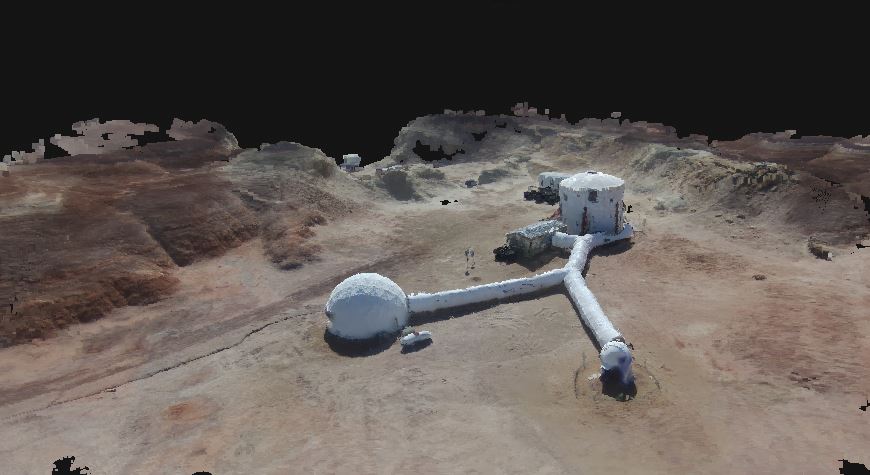
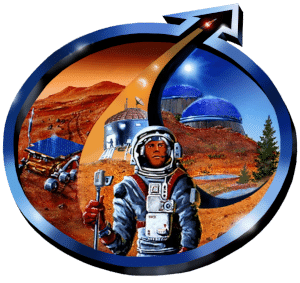
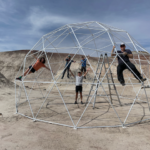
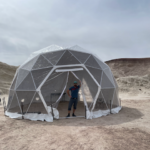
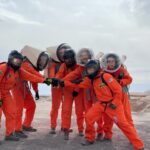

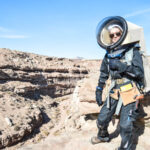
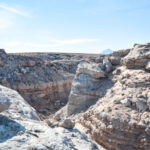
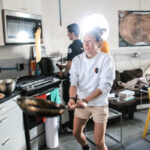
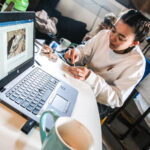
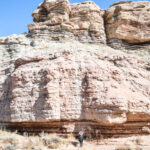
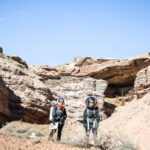
You must be logged in to post a comment.